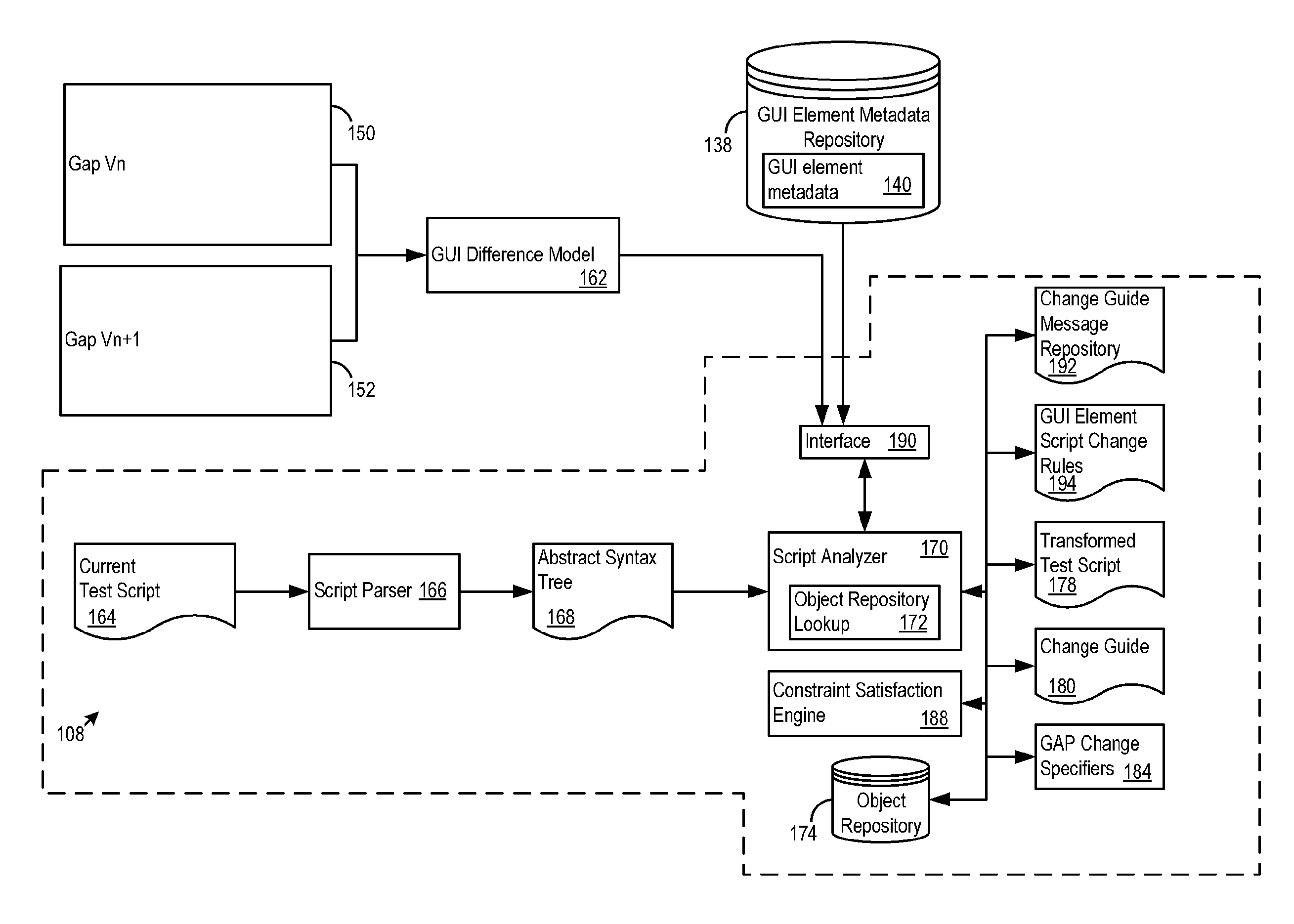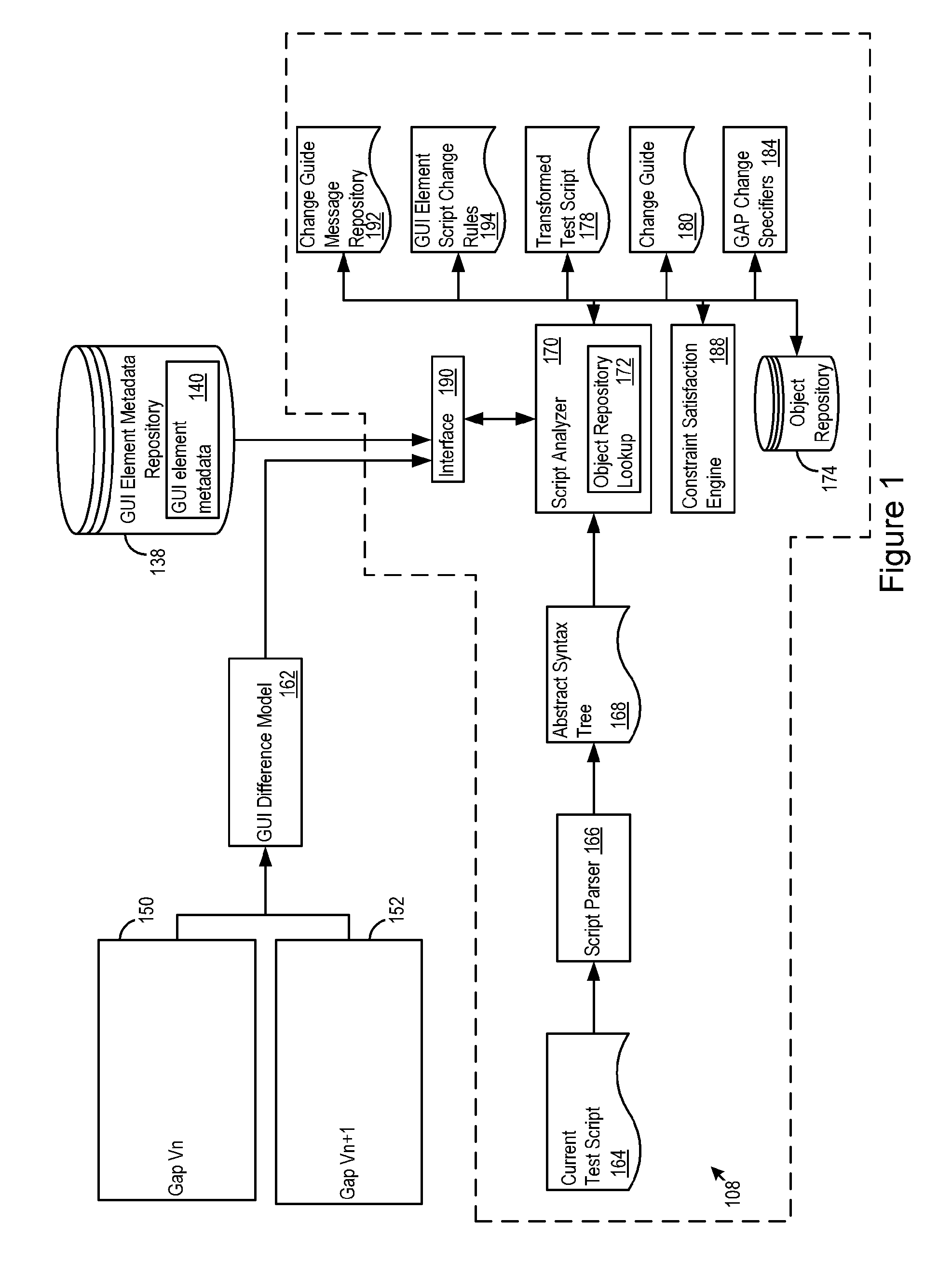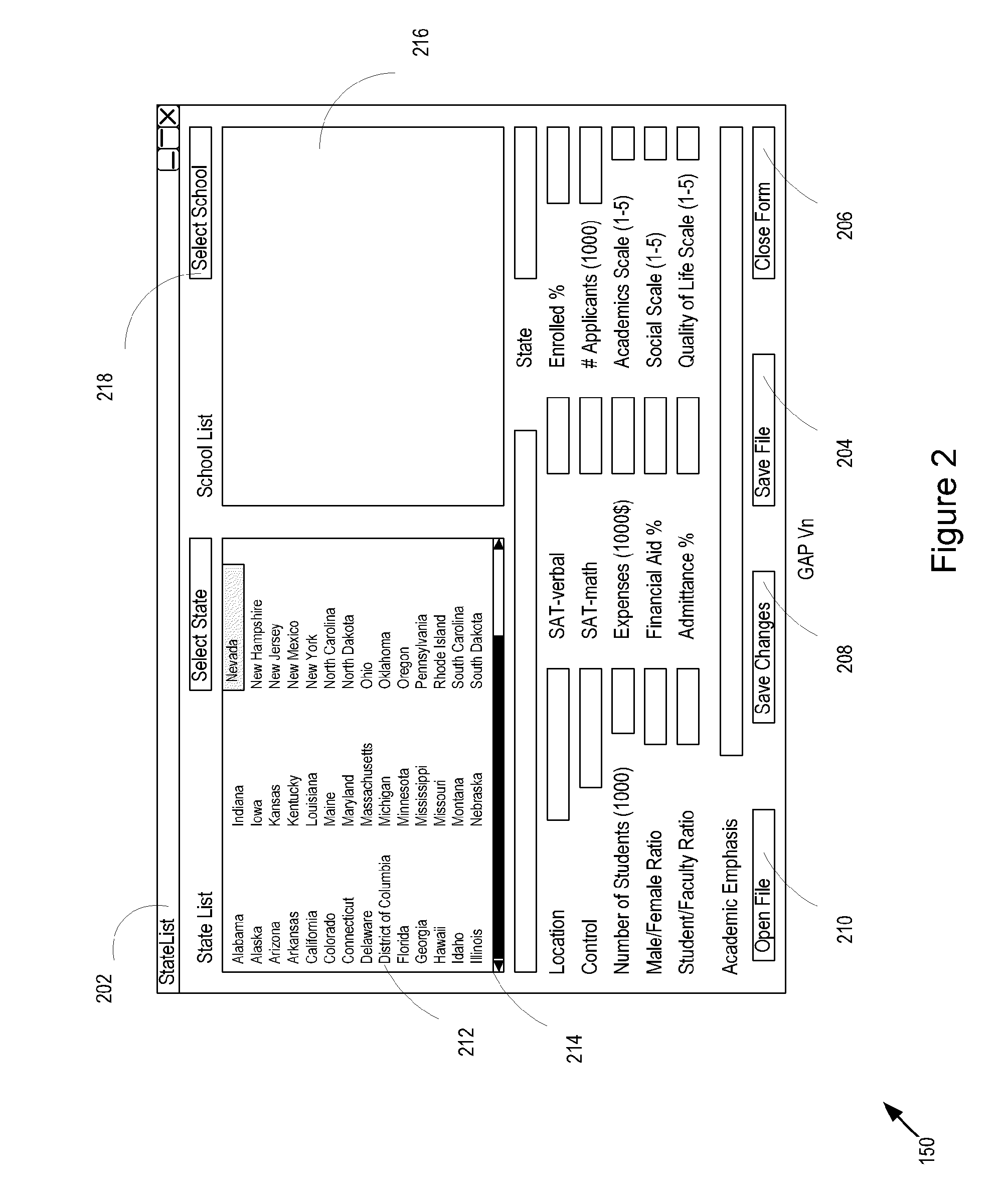Test script transformation analyzer with change guide engine
a test script and transformation analyzer technology, applied in the direction of error detection/correction, instruments, computing, etc., can solve the problems of reducing the time, cost and resource expenditure of automatic generation of new test scripts, and causing the development of complex computer software applications
- Summary
- Abstract
- Description
- Claims
- Application Information
AI Technical Summary
Benefits of technology
Problems solved by technology
Method used
Image
Examples
Embodiment Construction
[0042]FIG. 1 shows a script analyzer with change guide architecture (SAA) 108. Although detailed descriptions of the features of the SAA 108 will be provided further below, a brief introduction of the SAA 108 will first be presented. The SAA 108 receives a GUI difference model 162 that specifies GUI element differences between a current GAP version 150 and a subsequent GAP version 152. The GUI difference model 162 may be represented as an XML schema. In another implementation, the current and subsequent GAP tree models, as well as the GUI difference model 162 are implemented as relational models stored in a database. The SAA 108 employs an interface 190 to receive inputs and communicate with various components, including a GUI element metadata repository 138. The GUI element metadata repository 138 may provide detailed information regarding the GUI elements represented in the GUI difference model 162, the current GAP 150 and the subsequent GAP 152. In one implementation, the SAA 108...
PUM
 Login to View More
Login to View More Abstract
Description
Claims
Application Information
 Login to View More
Login to View More - R&D
- Intellectual Property
- Life Sciences
- Materials
- Tech Scout
- Unparalleled Data Quality
- Higher Quality Content
- 60% Fewer Hallucinations
Browse by: Latest US Patents, China's latest patents, Technical Efficacy Thesaurus, Application Domain, Technology Topic, Popular Technical Reports.
© 2025 PatSnap. All rights reserved.Legal|Privacy policy|Modern Slavery Act Transparency Statement|Sitemap|About US| Contact US: help@patsnap.com



